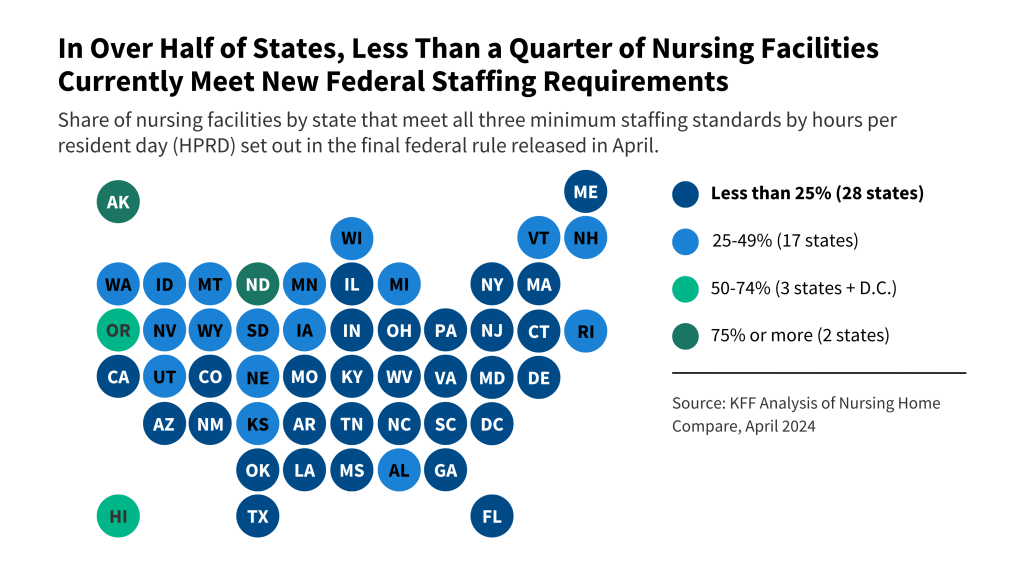In 45 states, fewer than half of nursing facilities currently meet all three staffing minimums required in the final federal rule that the Centers for Medicare and Medicaid Services (CMS) released in April, and in 28 states, less than a quarter do, according to a new KFF analysis. The share of facilities that meet these requirements ranges from 5% or lower in four states (AR, TN, TX and LA) to 50% or higher in five states (AK, ND, ME, HI and OR) and DC.
In rural areas, 20% of nursing facilities currently meet these standards, compared to 18% in urban areas. Despite having similar starting points, nursing facilities in urban areas have two fewer years to comply with all provisions of the rule, facing a deadline of May 2027 compared to May 2029 in rural areas. Though they face different challenges, urban and rural facilities currently have similar staffing patterns and both face potential staffing shortages. Rural facilities may struggle to find staff because there are fewer available workers, while urban facilities may struggle because available workers have more job options.

Across the U.S., only 1 in 5 (19%) nursing facilities currently meet all three staffing minimums. The share that comply is even lower among for-profit facilities (only 11%), compared to 41% of non-profit facilities and 39% of government facilities.
When the new federal requirements are fully implemented, nursing facilities will be required to maintain at least 0.55 registered nurse and 2.45 nurse aide hours per resident day (HPRD) in addition to the overall 3.48 HPRD requirement. Nursing facilities may apply for exemptions from these minimum staffing requirements if they are located in an area with workforce shortages.
The nursing home industry has identified the cost of hiring and retaining sufficient staff as a major concern, while resident and family advocates have long said new requirements are necessary to address well-documented issues with the quality of patient care.
Forthcoming decisions about how CMS will enforce the new staffing requirements and the ease by which facilities can acquire hardship exemptions may impact the effectiveness of the federal rule as well as how much costs could rise.